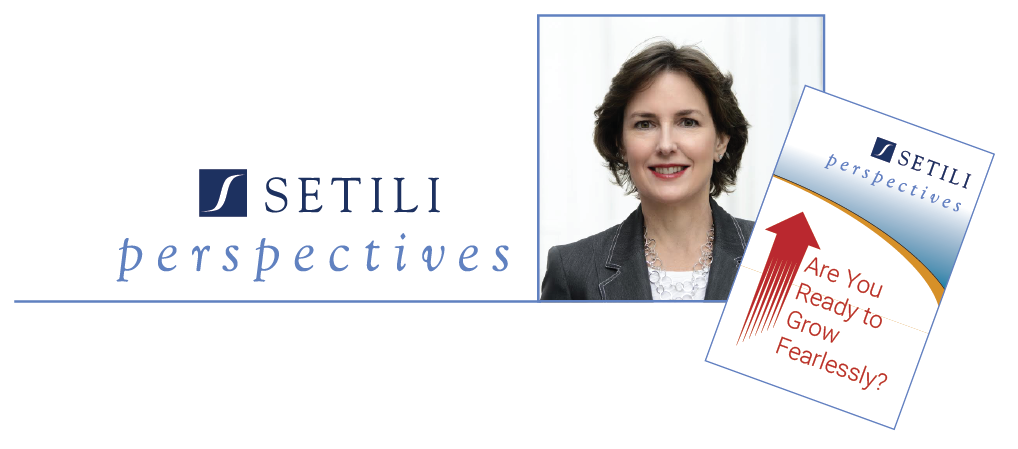What To Do When Your Customers Are Changing Faster Than You Are
Are Your Customers Changing Faster Than You Are?
![]()
If you are like most businesses these days, your customers’ behaviors and needs are evolving almost constantly. Sometimes the change is so subtle we barely perceive it, until suddenly we notice customers are defecting.
On the other hand, when we notice these changes, and capitalize on them, we can create exciting new sources of growth for our businesses.
During my consulting work, and in conducting research for my book, The Agility Advantage, How to Identify and Act on Opportunities in a Fast-Changing World, I’ve observed five things that successful entrepreneurs, businesses and non-profits do to stay ahead of changes in their marketplaces.
- Spend time observing and interacting with customers.
Shop any Thursday at Home Depot, and the employee who helps you find the tool, part or garden supply you need might just be an executive from corporate headquarters. By directly interacting with customers and experiencing firsthand the problems that store associates do, these decision makers tune into emerging market changes, and can develop practical solutions and improvements.
Similarly, Nissan responds continuously to comments customers make on Twitter, Facebook, and other social media, and gets these comments quickly into the hands of the relevant employees in customer service, manufacturing, and at the dealers. As a result, quality problems get fixed fast, and service is continuously improving.
Make it easy for customers to give you feedback. Talk to and observe customers daily and you’ll be the first to see and respond to changes in their needs.
2. Anticipate and prepare for what might happen next.
Ever noticed how some business people seem to be able to spot trends coming, and position themselves perfectly to catch the wave?
While no one can foretell the future, some people have a knack for being in the right place at the right time. Their secret is simple – they take the time to ask themselves: “What changes have I observed in customer’s needs, in technologies, in regulations, or in competitor offerings? What might happen next? What can I do to take advantage of these potential events?
For example, one business person I know noticed a line outside her competitor’s door on certain days of the month, and discovered those were the days Groupon offers came out. Anticipating that this trend might accelerate as other new promotions technologies became available, and wanting to avoid the deep-discounting inherent to couponing, she developed a loyalty program that built a strong bond with her best customers and ensured their repeat business.
3. Differentiate by developing new offerings and new ways of doing business
When you see changes in your industry, you can rest assured that your competitors have probably noticed the some of same market trends that you’ve observed. If you respond in the same way as your competitor, you run the risk of becoming—or continuing to be—undifferentiated and commoditized. (For more details I wrote a short piece on the topic here)
Therefore, don’t follow the competitive pack—devise a different and better way of capitalizing on the changes you see.
For example, Airbnb was founded during a difficult economic time when many homeowners were having trouble paying the bills. Company founders observed this, and came up with the idea of helping people to generate income by sharing extra “capacity” in their homes. They matched these homeowners with trustworthy guests who were looking for a travel adventure, and created a whole new industry in the process.
Test new offerings and ways of doing business often. By placing small bets that you can learn from, you’ll minimize risk while maximizing the speed with which you adapt to market change.
Facebook runs hundreds of different versions of its site at any given time. You may see a version of an ad with one set of colors and features, and I see another—simultaneously. Facebook measures customer response, then retains the versions that perform the best, while eliminating the others. Each incremental alteration to the user experience is minor, so users can adapt gradually to change. This rapid innovation and learning cycle has been essential to the company’s success.
- Allow employees the flexibility to pursue your company’s purpose.
The most important thing a leader can do is to enlist and inspire their employees around a clear and compelling vision and purpose. With this established, you can give employees the autonomy to adjust course as they see changes occurring in the market. When employees have a bit of free rein, they will not only be more energized, happy and loyal, they’ll be better able to spot and jump on emerging opportunities, to ensure your company’s continued success.
This post originally appeared in The Atlanta Business Chronicle



